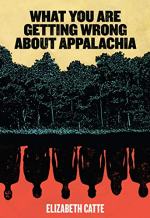
|
| Name: _________________________ | Period: ___________________ |
This test consists of 15 multiple choice questions and 5 short answer questions.
Multiple Choice Questions
1. William Shockley worked as a scientist at what institution when he emerged as a leader within a particular movement?
(a) The United States Department of Agriculture.
(b) Harvard College.
(c) Stanford University.
(d) Yale University.
2. Charles Murray is described as having taken what action before later describing it as "a teenage prank" (88)?
(a) Killing a cat.
(b) Wearing blackface.
(c) Robbing a house.
(d) Burning a cross.
3. The FSA was created in an attempt to combat a particular societal ill by resettling whom?
(a) Appalachians.
(b) Impoverished farmers.
(c) Unemployed coal miners.
(d) Native Americans.
4. In what year did the sheriff of Pike County, Kentucky order a raid on the home of community organizers Karen and Joseph Malloy?
(a) 1967.
(b) 1972.
(c) 1993.
(d) 1932.
5. What adjective does Catte use to describe the action Appalachians took "against corporate interests" (102)?
(a) Subversive.
(b) Ineffective.
(c) Radical.
(d) Ingenious.
6. In what decade were Harry Caudil's works about Appalachia published?
(a) The 1920s.
(b) The 1960s.
(c) The 1930s.
(d) The 1890s.
7. Linda Tate is an Appalachian author who "tells of the re-discovery" (90) of what kind of roots?
(a) Her Iroquois roots.
(b) Her Cherokee roots.
(c) Her French-Canadian roots.
(d) Her Welsh roots.
8. In what year was Carl Braden arrested and convicted of sedition against the government for helping to purchase a home for an African American family?
(a) 1943.
(b) 1925.
(c) 1969.
(d) 1954.
9. Harry Caudill asserted throughout his life that Appalachians' purported "dependency had something to do with" (85) what?
(a) Their poverty.
(b) Their lack of educational opportunities.
(c) Their climate.
(d) Their defective genes.
10. Catte asserts that "the Mulloys and McSurelys were indeed attempting to help poor individuals in the mountains seize power from" (98) whom?
(a) People of color.
(b) The government.
(c) The wealthy.
(d) Land ownership.
11. In what county did Dan Gibson use "armed resistance to route bulldozers off his family land" (100)?
(a) Broward.
(b) Knott.
(c) Mabel.
(d) Jackson.
12. Bill Strode worked for what newspaper when he was arrested for documenting a protester's actions?
(a) The Stanford-Gazette.
(b) The Courier-Journal.
(c) The Charlottesville-Patriot.
(d) The Courier-Times.
13. Huey Perry is described by Catte as leading a funeral procession composed of how many cars?
(a) 30.
(b) 80.
(c) 500.
(d) 100.
14. Myles Horton was "a labor and civil rights activist" (98) from what state?
(a) Kentucky.
(b) West Virginia.
(c) Tennessee.
(d) Mississippi.
15. The Moynihan Report was written by what type of scientist working for the United States government?
(a) A biologist.
(b) An anthropologist.
(c) A psychologist.
(d) A sociologist.
Short Answer Questions
1. Huey Perry was instrumental in "directing community action groups in the poorest parts of" (103) what state?
2. Catte discusses which president's extensive campaigning within Appalachia as a factor in the negative portrayals of Appalachians?
3. In what year did William Shockley debate the African American psychiatrist Frances Cress Welsing (84)?
4. The National Review did NOT use what term to refer to the people of Appalachia?
5. Catte claims that Harry Caudil's work drew attention away from what other important cause?
|
This section contains 466 words (approx. 2 pages at 300 words per page) |

|




